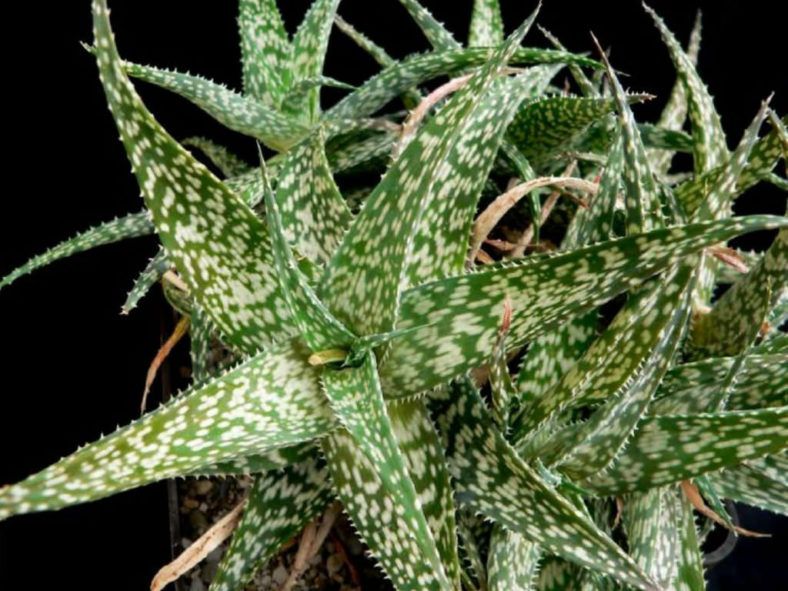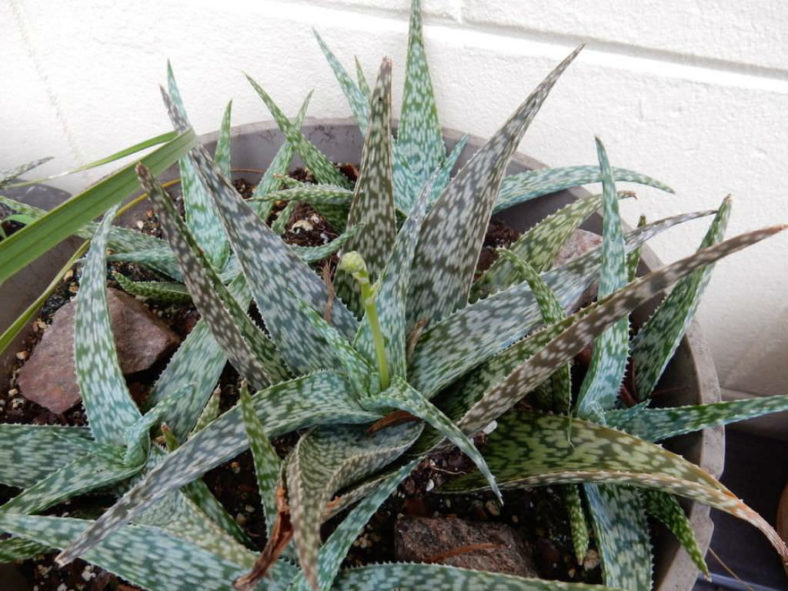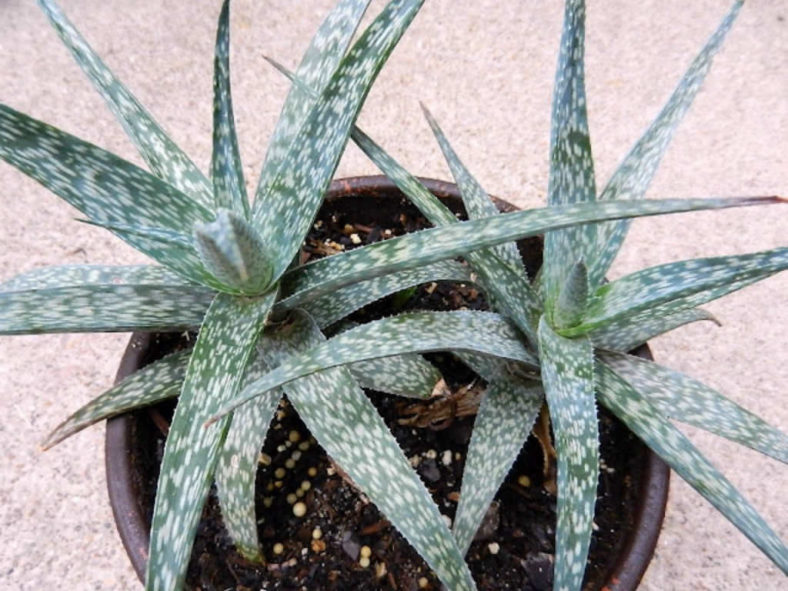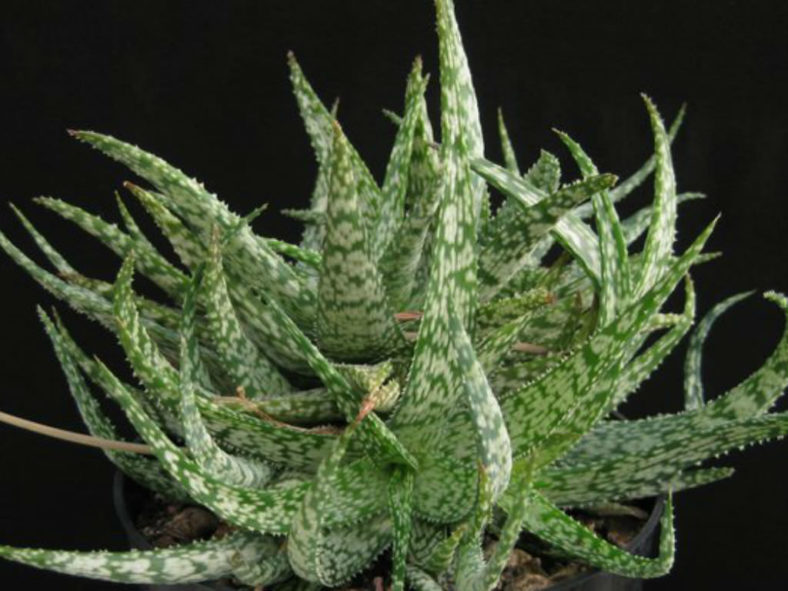Scientific Name
Aloe rauhii Reynolds
Common Name(s)
Snowflake Aloe
Synonym(s)
Guillauminia rauhii
Scientific Classification
Family: Asphodelaceae
Subfamily: Asphodeloideae
Genus: Aloe
Etymology
The specific epithet "rauhii (pronounced RAU-ee-eye)" honors Werner Rauh (1913–2000), a professor of Botany at the University of Heidelberg in Germany and Director of the Heidelberger Botanical Gardens.
Origin
Aloe rauhii is endemic to Madagascar.
Description
Aloe rauhii is a small succulent that forms rosettes of gray-green leaves with white, H-shaped spots and tiny white marginal teeth. It produces offsets around the base and creates mounding clumps. The rosettes can reach up to 4 inches (10 cm) in height and 8 inches (20 cm) in diameter. The leaves are triangular, measuring up to 4 inches (10 cm) long and 0.8 inches (2 cm) wide. They are flushed with brown when exposed to bright sunlight.
The rose-scarlet flowers are tubular and can reach up to 1 inch (2.5 cm) in length. They usually appear in winter or spring on simple or rarely branched stalks that can grow up to 12 inches (30 cm) tall.

How to Grow and Care for Aloe rauhii
Light: When growing Aloes indoors, place your plants in a southern or southwest-facing window with plenty of bright, indirect light. Outdoors provide light shade, especially during the hottest parts of the day.
Soil: Plant Aloes in well-drained soil specially formulated for cacti and other succulents, or make your soil mix. Drainage is essential because too much moisture around roots can cause root rot.
Hardiness: Aloe rauhii can withstand temperatures as low as 30 to 50 °F (-1.1 to 10 °C), USDA hardiness zones 10a to 11b.
Watering: These succulents need regular watering but are very tolerant of short periods of drought. Water deeply, but only when the soil is dry. Cut back on watering during the winter months.
Fertilizing: Aloes generally do not require fertilizer but may benefit from the extra nutrients.
Repotting: These plants are not particularly fast-growing and will rarely need repotting. To prevent them from becoming rootbound, repot them in the spring in a container a few inches larger in diameter every few years.
Propagation: Aloe can be propagated by offsets, cuttings, or seeds from a mature plant.
Learn more at How to Grow and Care for Aloe.
Toxicity of Aloe rauhii
Aloe rauhii is not listed as toxic for people and pets.
Hybrids of Aloe rauhii
Links
- Back to genus Aloe
- Succupedia: Browse succulents by Scientific Name, Common Name, Genus, Family, USDA Hardiness Zone, Origin, or cacti by Genus
Photo Gallery
Click on a photo to see a larger version.


